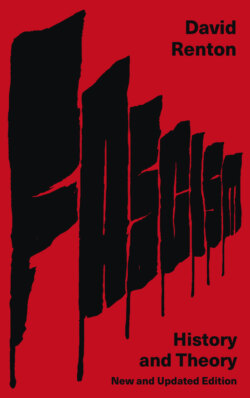Читать книгу Fascism - David Renton - Страница 12
На сайте Литреса книга снята с продажи.
Misogyny and Agency
ОглавлениеThe interwar Marxists were fascinated by the question of who joined the fascists. Often, as we shall see, this turned on an appraisal of how deeply fascist support extended into the working class, the ruling class or the classes in between. But it was also obvious that part of what made fascism possible was the world war, the desire of large numbers of people to return to something like wartime conditions and the ability of the fascists to organise a street-fighting militia made up of men nostalgic for war. In the words of one historical sociologist, Michael Mann, ‘Italian fascism triumphed more through violence than the ballot box’.66 The interwar Marxists would have agreed with him, and it is possible to find any number of passages commenting on the success of the Italian or the German fascists in recruiting a private army of street-fighters to be employed against the left. As Trotsky wrote in November 1931, ‘Without a doubt, the fascists have serious fighting cadres, experienced shock brigades. We must not make light of this: the officers play a big part even in the civil-war army. Still, it is not the officers, but the soldiers who decide.’67 Trotsky went on to compare the limited social weight of the fascists with the deep roots of the Socialists and Communists.
Although interwar Marxists were keenly aware of the importance of private militia to fascism, relatively few Socialists or Communists commented on the ways in which the recruitment of former soldiers (who were all men) or those who aspired to be soldiers, shaped the demographics of the early fascist parties.
The largest study of a fascist party at the stage when it existed as a movement, was a report carried out by the PNF in November 1921. This provided basic data on some 151,644 fascists, or around half the party’s then membership. Fewer than 2 per cent of members were women. More than half were military veterans.68
Various lists have been kept of the membership of the German National Socialists in the same period, including one from 1919 comprising 94 per cent of those who had joined the party that year. The most detailed study, by American historian Paul Madden, found that just 8 per cent of the Nazis’ recruits between 1919 and 1923 were women. Eighteen per cent were aged between 17 and 20, around double the presence of this age group within Germany as a whole.69
One trend in the historical literature is to insist on the large number of women who joined the fascist parties once they were in power, and the willingness of the fascist states to allow women to play leadership roles, albeit only within particular women’s campaigns. Young women were offered roles in mass organisations, where they were to be socialised into a fascist mindset. Middle-aged women contributed to the colonisation of Africa and eastern Europe. Older women were told that if they sacrificed their independence in favour of the development of future generations, they would be playing a heroic role. There were, undoubtedly, many hundreds of thousands of women who gave themselves willingly to the regime. ‘The women who followed Hitler,’ writes one historian, Claudia Koonz, ‘like the men, did so from conviction, opportunism and active choice.’70
Yet part of what enabled fascist parties to grow after 1918 was also that women’s equality had made significant advances over the past 50 years. In that context, fascism was the opponent of women’s agency. In an epoch of reform, women had won greater access to education, had been employed during the war in well-paid occupations that had previously been reserved for men71 and had enjoyed a postwar breakthrough (in Germany but not in Italy) in winning the franchise. Fascism was, in this sense, a ‘backlash’ movement. Part of the fascist appeal was the promise it made to right-wing men that it would subordinate a generation of ‘Red’ women. As we shall see, the diaries and memoirs of the earliest fascists thrill in a promise of sadistic violence against women.
Once fascism was in power, these ideas continued, and were expressed in the determination with which fascism demanded control of women’s reproductive capacities. The regimes’ policy was for women to be mothers, while any deemed unfit were to be forcibly sterilised. Following childbirth, women were to become ‘angels of the hearth’,72 excluded from the masculine sphere of politics. Aided by non-fascist institutions such as the Catholic Church, which had its own idea of woman’s rightful subordination within the family, emphasis was given to increasing the birth rate, with medals for those who brought up large families.
Later chapters of this book address how Marxists in the 1960s and 1970s, and those close to them, including the New Left historians Gisela Bock and Klaus Theweleit, theorised fascism’s relationship with women.
